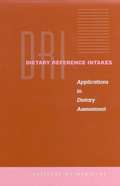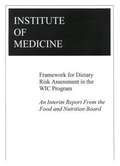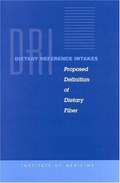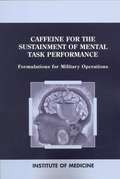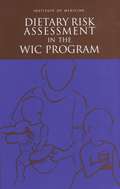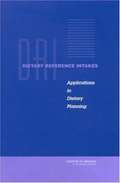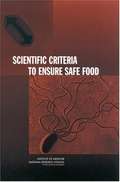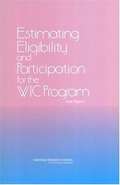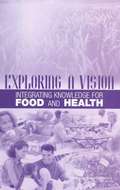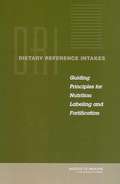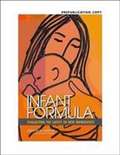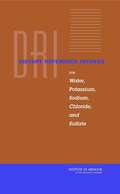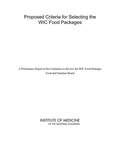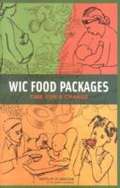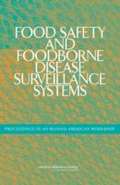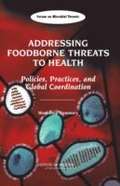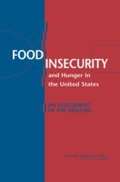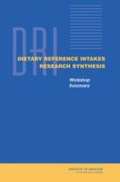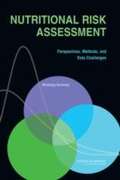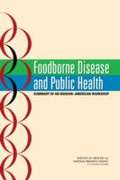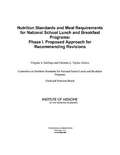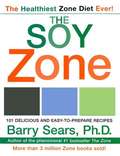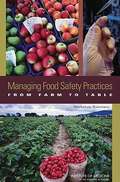- Table View
- List View
DRI Dietary Reference Intakes: Applications in Dietary Assessment
by Institute of MedicineSince 1994 the Institute of Medicine's Food and Nutrition Board has been involved in developing an expanded approach to developing dietary reference standards. This approach, the Dietary Reference Intakes (DRIs), provides a set of four nutrient-based reference values designed to replace the Recommended Dietary Allowances (RDAs) in the United States and the Recommended Nutrient Intakes (RNIs) in Canada. These reference values include Estimated Average Requirement (EAR), Recommended Dietary Allowance (RDA), Adequate Intake (AI), and Tolerable Upper Intake Level (UL). To date, several volumes in this series have been published.This new book, Applications in Dietary Assessment, provides guidance to nutrition and health research professionals on the application of the new DRIs. It represents both a "how to" manual and a "why" manual. Specific examples of both appropriate and inappropriate uses of the DRIs in assessing nutrient adequacy of groups and of individuals are provided, along with detailed statistical approaches for the methods described. In addition, a clear distinction is made between assessing individuals and assessing groups as the approaches used are quite different. Applications in Dietary Assessment will be an essential companion to any-or all-of the DRI volumes.
Framework for Dietary Risk Assessment in the WIC Program: Interim Report
by Institute of MedicineThe National Academies Press (NAP)--publisher for the National Academies--publishes more than 200 books a year offering the most authoritative views, definitive information, and groundbreaking recommendations on a wide range of topics in science, engineering, and health. Our books are unique in that they are authored by the nation's leading experts in every scientific field.
Dietary Reference Intakes Proposed Definition of Dietary Fiber
by Panel on the Definition of Dietary FiberDietary reference intakes (DRIs) are quantitative estimates of nutrient intakes to be used for planning and assessing diets for healthy people. This report reviews the bases for defining dietary fiber in the US, Canada, and other countries and discusses the role of dietary fiber in health. It proposes new definitions for fiber in the diet and provides the rationale for these definitions, reviews analytical methods for components of fiber, and discusses where new methods need to be developed to fully implement the proposed definitions. This work lacks a subject index. Annotation copyrighted by Book News Inc. , Portland, OR.
Caffeine for the Sustainment of Mental Task Performance: Formulations for Military Operations
by Committee on Military Nutrition ResearchThis report from the Committee on Military Nutrition Research reviews the history of caffeine usage, the metabolism of caffeine, and its physiological effects. The effects of caffeine on physical performance, cognitive function and alertness, and alleviation of sleep deprivation impairments are discussed in light of recent scientific literature. The impact of caffeine consumption on various aspects of health, including cardiovascular disease, reproduction, bone mineral density, and fluid homeostasis are reviewed. The behavioral effects of caffeine are also discussed, including the effect of caffeine on reaction to stress, withdrawal effects, and detrimental effects of high intakes. The amounts of caffeine found to enhance vigilance and reaction time consistently are reviewed and recommendations are made with respect to amounts of caffeine appropriate for maintaining alertness of military personnel during field operations. Recommendations are also provided on the need for appropriate labeling of caffeine-containing supplements, and education of military personnel on the use of these supplements. A brief review of some alternatives to caffeine is also provided.
Dietary Risk Assessment In The Wic Program
by Committee on Dietary Risk Assessment in the WIC ProgramDietary Risk Assessment in the WIC Program reviews methods used to determine dietary risk based on failure to meet Dietary Guidelines for applicants to the Special Supplemental Nutrition Program for Women, Infants, and Children (WIC). Applicants to the WIC program must be at nutritional risk to be eligible for program benefits. Although “dietary risk” is only one of five nutrition risk categories, it is the category most commonly reported among WIC applicants.This book documents that nearly all low-income women in the childbearing years and children 2 years and over are at risk because their diets fail to meet the recommended numbers of servings of the food guide pyramid. The committee recommends that all women and children (ages 2-4 years) who meet the eligibility requirements based on income, categorical and residency status also be presumed to meet the requirement of nutrition risk. By presuming that all who meet the categorical and income eligibility requirements are at dietary risk, WIC retains its potential for preventing and correcting nutrition-related problems while avoiding serious misclassification errors that could lead to denial of services for eligible individuals.
Dietary Reference Intakes: Applications in Dietary Planning
by Subcommittee on Interpretation Uses of Dietary Reference IntakesThe Dietary Reference Intakes (DRIs) are quantitative estimates of nutrient intakes to be used for planning and assessing diets for apparently healthy people. This volume is the second of two reports in the DRI series aimed at providing specific guidance on the appropriate uses of the DRIs. The first report provided guidance on appropriate methods for using DRIs in dietary assessment. This volume builds on the statistical foundations of the assessment report to provide specific guidance on how to use the appropriate DRIs in planning diets for individuals and for groups. Dietary planning, whether for an individual or a group, involves developing a diet that is nutritionally adequate without being excessive. The planning goal for individuals is to achieve recommended and adequate nutrient intakes using food-based guides. For group planning, the report presents a new approach based on considering the entire distribution of usual nutrient intakes rather than focusing on the mean intake of the group. The report stresses that dietary planning using the DRIs is a cyclical activity that involves assessment, planning, implementation, and reassessment.
Scientific Criteria to Ensure Safe Food
by National Research CouncilFood safety regulators face a daunting task: crafting food safety performance standards and systems that continue in the tradition of using the best available science to protect the health of the American public, while working within an increasingly antiquated and fragmented regulatory framework. Current food safety standards have been set over a period of years and under diverse circumstances, based on a host of scientific, legal, and practical constraints. Scientific Criteria to Ensure Safe Food lays the groundwork for creating new regulations that are consistent, reliable, and ensure the best protection for the health of American consumers. This book addresses the biggest concerns in food safety—including microbial disease surveillance plans, tools for establishing food safety criteria, and issues specific to meat, dairy, poultry, seafood, and produce. It provides a candid analysis of the problems with the current system, and outlines the major components of the task at hand: creating workable, streamlined food safety standards and practices.
Estimating Eligibility and Participation for the WIC Program: Final Report
by Panel to Evaluate the USDA's Methodology for Estimating Eligibility Participation for the WIC ProgramThis report reviews the methods used to estimate the national number of people eligible to participate in the Special Supplemental Nutrition Program for Women, Infants, and Children (WIC) under full funding of the program. It reviews alternative data sets and methods for estimating income eligibility, adjunctive eligibility (which occurs when people are eligible for WIC because they are enrolled in other federal public assistance programs) and nutritional risk, as well as for estimating participation if the program is fully funded.
Exploring A Vision: A Workshop Summary
by Tina I. RouseCenturies of scientific advances in agriculture have increased the quantity, quality, and variety of our food supply. Food in the United States is abundant and affordable, incomes are at record levels, nutrition and health knowledge is at an all-time high. Yet many Americans are not eating a proper diet. The result is an obesity epidemic that contributes to rising healthcare costs from increased rates of heart disease, stroke, diabetes, and several cancers. Whether we see food as medicine or as the cause of disease, medical and agricultural research have the potential to come together in innovative ways to help consumers and producers understand and face the challenges of following a healthful diet. More than 100 leaders in agriculture, health research, education policy, and industry convened at the National Academies in June 2003 to share their opinions on what would be a more efficient and effective system for conducting food and health research. Some of their thoughts follow. Participants concluded that no one organization or agency can solve food-related health issues alone-- the nation needs better mechanisms for bringing together its agriculture and health-care infrastructures to address food-related health problems. Addressing the obesity issue, in particular, will require a multidisciplinary strategy that includes research on foods, consumer knowledge and behavior, and the economics of food- and health-related activities, including food pricing, health-care costs, and agricultural support programs.
Dietary Reference Intakes: Guiding Principles for Nutrition Labeling and Fortification
by Committee on Use of Dietary Reference Intakes in Nutrition LabelingSince 1997, the Institute of Medicine has issued a series of nutrient reference values that are collectively termed Dietary Reference Intakes (DRIs). The DRIs offer quantitative estimates of nutrient intakes to be used for planning and assessing diets. Using the information from these reports, this newest volume in the DRI series focuses on how the DRIs, and the science for each nutrient in the DRI reports, can be used to develop current and appropriate reference values for nutrition labeling and food fortification. Focusing its analysis on the existing DRIs, the book examines the purpose of nutrition labeling, current labeling practices in the United States and Canada, food fortification practices and policies, and offers recommendations as a series of guiding principles to assist the regulatory agencies that oversee food labeling and fortification in the United States and Canada. The overarching goal of the information in this book is to provide updated nutrition labeling that consumers can use to compare products and make informed food choices. Diet-related chronic diseases are a leading cause of preventable deaths in the United States and Canada and helping customers make healthy food choices has never been more important.
Infant Formula: Evaluating The Safety Of New Ingredients
by Institute of Medicine of the National AcademiesInfant formulas are unique because they are the only source of nutrition for many infants during the first 4 to 6 months of life. They are critical to infant health since they must safely support growth and development during a period when the consequences on inadequate nutrition are most severe. Existing guidelines and regulations for evaluating the safety of conventional food ingredients (e.g., vitamins and minerals) added to infant formulas have worked well in the past; however they are not sufficient to address the diversity of potential new ingredients proposed by manufacturers to develop formulas that mimic the perceived and potential benefits of human milk. This book, prepared at the request of the Food and Drug Administration (FDA) and Health Canada, addresses the regulatory and research issues that are critical in assessing the safety of the addition of new ingredients to infants.
Dietary Reference Intakes for Water, Potassium, Sodium, Chloride, and Sulfate
by Panel on Dietary Reference Intakes for Electrolytes WaterThe Dietary Reference Intakes (DRIs) are quantitative estimates of nutrient intakes to be used for planning and assessing diets for healthy people. This new report, the sixth in a series of reports presenting dietary reference values for the intakes of nutrients by Americans and Canadians, establishes nutrient recommendations on water, potassium, and salt for health maintenance and the reduction of chronic disease risk. Dietary Reference Intakes for Water, Potassium, Sodium, Chloride, and Sulfate discusses in detail the role of water, potassium, salt, chloride, and sulfate in human physiology and health. The major findings in this book include the establishment of Adequate Intakes for total water (drinking water, beverages, and food), potassium, sodium, and chloride and the establishment of Tolerable Upper Intake levels for sodium and chloride. The book makes research recommendations for information needed to advance the understanding of human requirements for water and electrolytes, as well as adverse effects associated with the intake of excessive amounts of water, sodium, chloride, potassium, and sulfate. This book will be an invaluable reference for nutritionists, nutrition researchers, and food manufacturers.
Proposed Criteria for Selecting the WIC Food Packages
by A Preliminary Report of the Committee to Review the WIC Food PackagesThe National Academies Press (NAP)--publisher for the National Academies--publishes more than 200 books a year offering the most authoritative views, definitive information, and groundbreaking recommendations on a wide range of topics in science, engineering, and health. Our books are unique in that they are authored by the nation's leading experts in every scientific field.
Wic Food Packages: Time For A Change
by Institute of Medicine of the National AcademiesThe Special Supplemental Nutrition Program for Women, Infants, and Children (the WIC program) has promoted the health of low-income families for more than 30 years by providing nutrition education, supplemental food, and other valuable services. The program reaches millions of families every year, is one of the largest nutrition programs in the United States, and is an important investment in the nation’s health. The U.S. Department of Agriculture charged the Institute of Medicine with creating a committee to evaluate the WIC food packages (the list of specific foods WIC participants obtain each month). The goal of the study was to improve the quality of the diet of WIC participants while also promoting a healthy body weight that will reduce the risk of chronic diseases. The committee concluded that it is time for a change in the WIC food packages and the book provides details on the proposed new food packages, summarizes how the proposed packages differ from current packages, and discusses the rationale for the proposed packages.
Food Safety And Foodborne Disease Surveillance Systems: Proceedings Of An Iranian-american Workshop
by National Research Council of the National AcademiesIn October 2004 the Research Center for Gastroenterology and Liver Diseases of Shaheed Beheshti University hosted in Tehran an Iranian-American workshop on Food Safety and Surveillance Systems for Foodborne Diseases. The purposes of the workshop were to initiate contacts between Iranian and American specialists, exchange information about relevant activities in the two countries, and set the stage for future cooperation in the field. The participants also identified important aspects of food safety that should be addressed more intensively by both countries, including surveillance, research, international trade, and risk assessment. The framework for the workshop had been developed during a meeting of Iranian and American specialists in June 2003 in Les Treilles, France. More that 100 specialists participated in the workshop in their personal capacities, along with representatives of the World Health Organization and the Food and Agriculture Organization. These proceedings include a number of papers that were presented at the workshop together with summaries of discussions following presentation of the papers.
ADDRESSING FOODBORNE THREATS TO HEALTH: Policies, Practices, and Global Coordination
by Institute of Medicine of the National AcademiesThe National Academies Press (NAP)--publisher for the National Academies--publishes more than 200 books a year offering the most authoritative views, definitive information, and groundbreaking recommendations on a wide range of topics in science, engineering, and health. Our books are unique in that they are authored by the nation's leading experts in every scientific field.
FOOD INSECURITY and Hunger in the United States: AN ASSESSMENT OF THE MEASURE
by National Research Council of the National AcademiesThe National Academies Press (NAP)--publisher for the National Academies--publishes more than 200 books a year offering the most authoritative views, definitive information, and groundbreaking recommendations on a wide range of topics in science, engineering, and health. Our books are unique in that they are authored by the nation's leading experts in every scientific field.
Seafood Choices: Balancing Benefits And Risks
by Institute of Medicine of the National AcademiesThe fragmented information that consumers receive about the nutritional value and health risks associated with fish and shellfish can result in confusion or misperceptions about these food sources. Consumers are therefore confronted with a dilemma: they are told that seafood is good for them and should be consumed in large amounts, while at the same time the federal government and most states have issued advisories urging caution in the consumption of certain species or seafood from specific waters. Seafood Choices carefully explores the decision-making process for selecting seafood by assessing the evidence on availability of specific nutrients (compared to other food sources) to obtain the greatest nutritional benefits. The book prioritizes the potential for adverse health effects from both naturally occurring and introduced toxicants in seafood; assesses evidence on the availability of specific nutrients in seafood compared to other food sources; determines the impact of modifying food choices to reduce intake of toxicants on nutrient intake and nutritional status within the U.S. population; develops a decision path for U.S. consumers to weigh their seafood choices to obtain nutritional benefits balanced against exposure risks; and identifies data gaps and recommendations for future research. The information provided in this book will benefit food technologists, food manufacturers, nutritionists, and those involved in health professions making nutritional recommendations.
Dietary Reference Intakes Research Synthesis Workshop Summary
by Institute of Medicine of the National AcademiesThe National Academies Press (NAP)--publisher for the National Academies--publishes more than 200 books a year offering the most authoritative views, definitive information, and groundbreaking recommendations on a wide range of topics in science, engineering, and health. Our books are unique in that they are authored by the nation's leading experts in every scientific field.
NUTRITIONAL RISK ASSESSMENT: Perspectives, Methods, and Data Challenges
by Institute of Medicine of the National AcademiesThe National Academies Press (NAP)--publisher for the National Academies--publishes more than 200 books a year offering the most authoritative views, definitive information, and groundbreaking recommendations on a wide range of topics in science, engineering, and health. Our books are unique in that they are authored by the nation's leading experts in every scientific field.
Foodborne Disease and Public Health: SUMMARY OF AN IRANIAN-AMERICAN WORKSHOP
by Institute of Medicine National Research Council of the National AcademiesThe Institute of Medicine's Food and Nutrition Board and the National Research Council's Policy and Global Affairs Division convened a workshop in Washington, D.C., entitled Foodborne Disease and Public Health: An Iranian-American Workshop. The overall goals of this workshop were to facilitate the exchange of ideas about foodborne disease and public health and to promote further collaboration among Americans and Iranians on this topic of mutual interest. Experts invited to participate in this workshop addressed a variety of topics, ranging from the surveillance of outbreaks of foodborne illness to approaches to medical training in the Iranian and U.S. educational systems. The workshop was part of a series of cooperative efforts between the United States and Iran as the two countries have collaborated in the past on similar projects relating to foodborne disease.
Blessed
by Cynthia Leitich SmithEven as teenaged Quincie Morris adjusts to her appetites as a neophyte vampire, she must clear her true love, the hybrid-werewolf Kieren, of murder charges; thwart the apocalyptic ambitions of Bradley Sanguini, the vampire-chef who "blessed" her; and keep her dead parents' restaurant up and running before she loses her own soul.
Nutrition Standards and Meal Requirements for National School Lunch and Breakfast Programs: Phase I. Proposed Approach for Recommending Revisions
by Institute of Medicine of the National AcademiesThe National School Breakfast Program feeds 10 million children each day, and the National School Lunch Program feeds more than 30 million students. Yet the national nutrition standards and meal requirements for these meals were created more than a decade ago, making them out of step with recent guidance about children's diets. With so many children receiving as much as 50 percent of their daily caloric intake from school meals, it is vital for schools to provide nutritious food alongside the best possible education for the success of their students. At the request of U.S. Department of Agriculture (USDA), the Institute of Medicine assembled a committee to recommend updates and revisions to the school lunch and breakfast programs. The first part of the committee's work is reflected in the December 2008 IOM report Nutrition Standards and Meal Requirements for National School Lunch and Breakfast Programs: Phase I. Proposed Approach for Recommending Revisions. Phase II of the report is expected in Fall 2009. This first report provides information about the committee's approach as it reviews the school lunch and breakfast programs. In the report's second part, the committee will share its findings and recommendations to bring these meals more in line with today's dietary guidelines. The committee welcomes public comments about its intended approach. An open forum will be held January 28, 2009 in Washington, DC to receive input from the public. Please go to http://www.iom.edu/fnb/schoolmeals for details or email FNBSchoolMeals@nas.edu with any input.
The Soy Zone
by Barry SearsAs America is finding out, soy is the most complete and versatile protein in existence. It has no cholesterol or saturated fat but plenty of vitamins and fiber and offers amazing health benefits for vegetarians and non-vegetarians alike. Based on the simple idea that food is your best medicine, The Soy Zone shows you how to maintain peak mental alertness, increase your energy, and reduce the likelihood of chronic disease -- all while losing excess body fat. Dr. Barry Sears brings all the life-enhancing benefits of the Zone to a mouthwatering collection of delicious soy-based Zone meals, featuring:Soy Zone-perfect breakfasts, lunches, appetizers, dinners, and snacksAppetizing new recipes from top chefs, such as Red Bean Chill, Hong Kong Burger, and Soy Zone-friendly Vegetarian Pad ThaiThe ultimate healthful food plan, with quick and easy fat-burning alternatives to dangerous high-carb dietsAn exercise and longevity plan for men and womenHelpful recommendations for Soy Zoning your kitchenA scientifically proven plan for achieving perfect hormonal balance while losing weight
Managing Food Safety Practices FROM FARM TO TABLE: Workshop Summary
by Institute of Medicine of the National AcademiesLegal regulations and manufacturers' monitoring practices have not been enough to prevent contamination of the national food supply and protect consumers from serious harm. In addressing food safety risks, regulators could perhaps better ensure the quality and safety of food by monitoring food production not just at a single point in production but all along the way, from farm to table. Recognizing the troubled state of food safety, the Institute of Medicine's (IOM) Food Forum met in Washington, DC, on September 9, 2008, to explore the management of food safety practices from the beginning of the supply chain to the marketplace.
